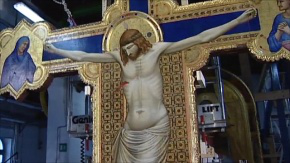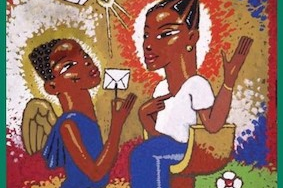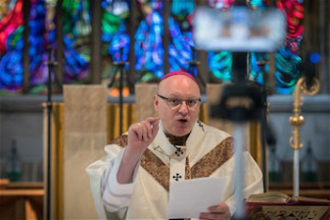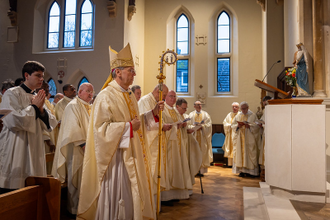London: restored Giotto masterpiece unveiled

Giotto's Ognissanti Crucifix
When Anna-Marie Hilling began work on the restoration of Giotto's 14th Century Ognissanti Crucifix she had little idea of the revelations the process would lead to. The next eight years of intervention on the five metre high Crucifix would result not only in the physical restoration of a visually striking icon, but also in several key intellectual discoveries, and, what Hilling describes as "personal emotional enrichment. "
During a talk given last night at Holy Apostles Church in Pimlico, central London, in aid of the charity New Ways, Hilling provided, for the first time, a detailed overview of the nature and process of the restoration, together with the learning that resulted. Hilling explained that before the restoration work by the team at Opificio delle Pietre Dure in Florence began, the magnificence of Giotto's crucifix had been dimmed by centuries of dust and grime, largely caused by candle smoke. This dimming effect on the original images prevented art historians from gaining a true appreciation of the mastery of the work. Thus they credited not Giotto, but one of his pupils with the creation of the Ognissanti Crucifix. Then, by means of a painstakingly detailed and technical process, the painting was carefully cleaned to reveal its original brilliance. The resulting information, revealed the true extent of Giotto's involvement in the painting, and the signature features by which he helped shape Italian art of the Renaissance.
Modern day technology, including microscopes, infra red photography and Xrays, havr enabled specialists to analyze the processes used to create the human images that feature in Giotto's design. It is now understood that a team of workshop assistants would have painted the ground layers over the wood of the cross, while Giotto himself carried out the preparatory drawing, consisting of incisions, carbon and ink. Giotto used charcoal beneath the paint to provide shadows on the figures faces and clothing, and then employed coloured pigments made of crushed stones and clays bound by egg yoke to paint the images of Christ, Mary and St John the Evangelist.
The colours that Giotto chose to use played a significant role in progressing Renaissance thought through art. For example, colours used such as aquamarine blue and vermillion red signify the incarnation and divinity of Christ. Giotto's depiction of the dying Christ is also significant because it provides the first representation in medieval Italian art of the crown of thorns.
Perhaps most striking however, are the facial expressions of Mary and St John the Evangelist. Through cleaning away the darkened layer that concealed the detail of Giotto's work, Anna-Marie Hilling came to discover emotion expressed in the faces of Christ's mother and the apostle. Through six years spent cleaning the images, millimetre by millimetre, Hilling began to encounter a new realism that had not before been portrayed in Italian art. Having removed the dark outer layer, Hilling says that the viewer's perception of the figures had been altered. The characters Mary and St John are restored to life. Their humanity comes to the fore as Giotto's subtle shading and delicate suggestion, such as a trickle of tears on the face of St John, reveal the depth of emotion that these witnesses of the Crucifixion experience. Thus the intervention carried out by Hilling and the team at Opificio delle Pietre Dure brings the viewer an entirely new experience - not only witnessing renewed radiance of the figures, and the extremely realistic depiction of their emotion, but the humanity of the risen Christ, that Giotto triumphantly positioned above the scenes of grief and death.
Hilling makes a point of describing her joy at seeing the Crucifix returned to its original home in the Orgnissanti church in Florence. The image of the risen Christ painted above the dying figure on the cross signifies the triumph of the Christ's resurrection over death, in this case helped made vivid once again, by the work of Hilling and her team.
For more information on New Ways see: www.newways.org.uk/


















